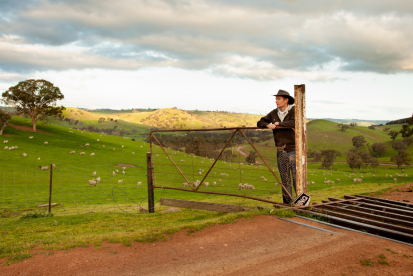The AAAC (WA) Outlook Conference in 2022 was a great event. Natalie and I attended with several of the Agrimaster team, and we took away many insights.
Below is a summary of my learnings from the event. You will see that the world is in a state of flux; prices are high for both commodities and inputs. There are some serious headwinds in 2023, with inflation, the war in Ukraine, interest rates, countries reducing trade, climate change action, and labour shortages. We are fast moving away from fossil fuel, and it is being driven by cost and not politics.
Every year and decade brings challenges, yet where there is change, there is also opportunity.
Here is a link to some of the speaker presentations: Outlook 2022 Presentations – AAAC(WA) (aaacwa.org.au).
Insights and learnings
Global insights
- Globalisation is contracting
- Inflation is very high across the world
- Interest rate hikes will remain high until inflation is under control

Global growth slowing
- The high US dollar is making food very expensive for consumers around the world
- Ukraine's war is making grain prices unstable
- Reduction in animal protein consumption (animal protein is too costly for most of the world)
- Ukraine exports twice as much wheat as Australia's record season
Commodity outlook
- Wheat price is historically very high but likely to come off (however, the price is tough to forecast accurately)
- Large long-term demand for oilseeds (canola and sunflower) due to the huge push for renewable diesel

Input cost outlook
- Fertiliser prices remain expensive due to the:
- Restrictions in natural gas supply (Europe & China)
- Potash supply is being cut off from Belarus (40% of global supply)
- China has restricted Phosphate exports to protect local farmers from high prices (it didn't work)
- Australian dollar deflation


- Diesel fuel remains expensive (Russia is a significant supplier)
- Glyphosate (roundup) will go up in price as it is linked to the natural gas price
Meat industry
- Prices for all meat are very high
- WA farmers can't get sheep through abattoirs due to the lack of labour availability in abattoirs (30-40 thousand jobs outstanding)
The future outlook
The future of the world's transport is electric (strong S curves of market adoption).


The future of energy production is solar (due to the fast reduction in the cost of production).

Farmers will need to find a way to reduce their carbon footprint (especially meat growers)
- The responsibility to reduce supply chain emissions is being pushed down from large corporates to farmers. (e.g., Under the carbon offset accounting rules, technically, they don't grow the food, so it is not their carbon to account for!)
- This will continue to make meat very expensive for most of the world, driving the move to alternative non-animal protein
- There will be a significant investment into non-animal meats (plant meat alternatives and lab-grown meat); this will be due to the cost of animal meat and not, in most parts, a dietary choice)
- The alternative meat market will grow in tandem with the traditional meat market

Interesting fun facts
- 14% of Europe is vegan (and growing)
- 40% of the world's Potassium comes from Russia & Belarus
- 50% of Australia's Phosphate supply is from China & Morocco
- 1% change in the Australian exchange rate can cost framers an extra $20-$30/tonne for fertiliser
- 21.3 million tonnes of grain were delivered to CBH in 21/22 season
- Global meat consumption per capita

This summary should not be considered as advice and is for general information purposes only.




